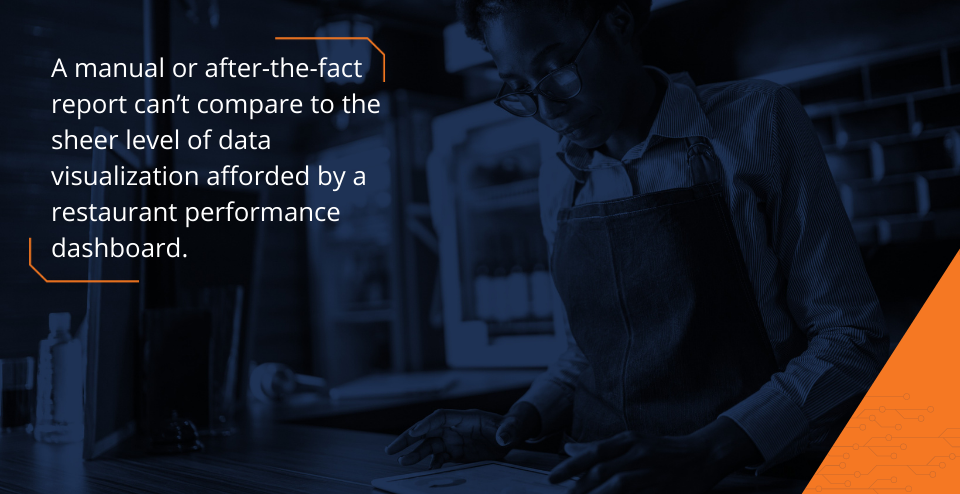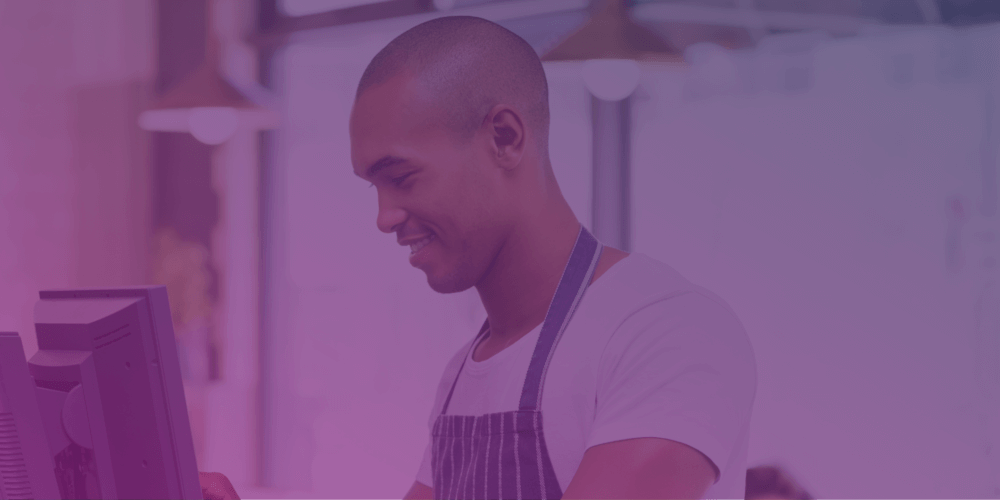Gauging the health of your concept is one of the most important things you can do as a restaurant executive.
Historically, this comes in the form of year-end and quarterly reports from your franchisees and owners/operators. Collectively, these reports will highlight profits, losses, and high-level trends you can use to set the strategic direction for your entire concept in subsequent fiscal years.
But is this useful enough for you to make smart, data-driven decisions? Does the high-level view enable you to correct problems in real-time?
When profit margins are as fragile as they’ve ever been and the slightest misstep can make or break a location, reports must go further. You need real-time data you can access and pull insights from at once. This is only possible through a store performance dashboard that highlights the metrics you need to make decisions.
Why? Read on to find out 6 reasons you need a store performance dashboard for your restaurant concept.
Make Adjustments Now, Not Tomorrow
Right now, at this exact moment, can you immediately find out:
- What recipes drive the most sales
- What ingredient costs the most money
- How much each location earns
- Day over day, month over month, and year over year figures of all notable data
For most restaurateurs, it’s possible to access this information, but it will likely take a lot of comparing, a variety of applications, and input from various other parties, including your franchisees. That’s particularly true if you’re only able to review these metrics each quarter.
This isn’t good enough in today’s landscape, when real-time information should be at your fingertips. A store performance dashboard set up properly will let you see the above information and any other details you program it to display.
When sales drop, you want to know as soon as that happens. If it takes until the end of the quarter for you to identify a negative trend, that could be far too long to make the necessary changes to bring your sales back up.
Assume, for instance, that a handful of locations in the Northeast all experience a drop in sales. Maybe it’s seasonal, and the trend was anticipated because much of your business comes from outdoor patios that had to shutter for the autumn, thus reducing capacity. Or maybe supply chain issues contributed to these locations being unable to serve a popular menu item, thereby reducing guest demand.
Each scenario can only be successfully tackled if you’re alerted in real time to what’s happening. If unseasonably cool weather puts a strain on restaurant capacity, you might order outdoor heat lamps or kerosene earlier than anticipated. If an ingredient is so popular that guests won’t show up because their favorite items aren’t available, it might be worth the cost of switching suppliers, even temporarily, to keep loyalty high.
Data Goes Beyond What’s Possible with Excel or PowerPoint
A manual or after-the-fact report can’t compare to the sheer level of data visualization afforded by a restaurant performance dashboard.
If it’s possible to track, then it’s possible to track within a performance dashboard:
- Inventory levels
- Ordering information
- Prices of ingredients
- Labor hours worked
- Salary cost
- Tip percentages
- Waste
- Non-Ideal Vs. Actual items
- Sales
- Peak performance benchmarks
- Day and time popularity
If your franchisees input this information electronically, then that digital signature can be used to power a dashboard that provides visibility.
What’s more, you can remain confident that the data pouring in is accurate. With real-time insights into sales, accounting, inventory and other details of each store, you see the stream of information as employees ring up transactions. This reduces the risk of an error in a quarterly or year-end report, providing assurances that what you see is, in fact, an accurate representation of the health of your business.
Easy Visual Representation
This probably seems like a lot of data to compare and contrast, but that’s the other big draw of a dashboard: highly visual, easily understood takeaways.
Using something as simple as reds and greens, up arrows and down arrows, along with some backend programming to calculate percentages, your dashboard can intuitively display trends you need to make decisions.
You can create preset views that pull up your most important data and favored display, and you can make adjustments in real time to compare times of day, year over year numbers, and even see how individual locations or groups of locations compare with each other.

See The Forest and The Trees
Because of the level of data, and the ease with which it can be displayed, you’re afforded the ability to unlock insights at both the micro and macro level.
Both the high-level and the ground-level view are important for your business. When you compare every single location at once, you get a sense of the health of your overall organization and the strategic direction you’re headed in.
But it’s the ability to drill deeper into this information and look at individual locations that will distinguish you from the competition. Unless you make across-the-board decrees regarding price or policy (and such directives do certainly have their place!), the path to success runs through franchisees and single or multi-unit locations.
Is the labor market in one city or state stretched thin? The price of injecting some brand-focused marketing dollars into that market or increasing pay could be more than offset by the value a fully staffed crew brings. Did a new product completely fizzle due to a geographic quirk? Rebound quickly with new specials or strategic offers. Are you wasting too much of an expensive ingredient? See if any replacement ingredients are available.
When you’re alerted to trends as they happen, at the micro level, you’re able to make adjustments that lead to further growth and even inform your strategy at the macro level.
Test, Test, and Then Test Again
A dashboard lets you see the results of your market research earlier than you might otherwise.
Trying out a new menu dish at one specific location? You probably want to know how sales are going early on. You still want to give the test time to run its course and drum up interest, but early buzz will signal what your approach should be when you roll out the product nationwide, or even if you should roll out the product nationwide.
Have a new concept, such as a new delivery model or touchless ordering? A dashboard will show you their performance metrics in real time.
This real-time data is essential to one more important point…
Loyalty Apps Require Data, and Dashboards Provide Your First Look at That Data
A loyalty program, backed by an app that performs such functions as ordering and points tracking, can increase customer loyalty and thus sales per customer.
These apps perform their best when they’re tied to data-based, real-time strategic direction. If you can see what sells well in real-time, you can push offers to your customers via email or the app, encouraging them to continue dining with you. You can give them VIP access to deals or specials before the general public. You can remember what they order again and again and use this data in concert with data from other locations to launch new products that will make your restaurant more popular than ever before.
Restaurant dashboards create the ability to procure this data and inform your strategy. They let you visualize the positive or negative performance of your brand.
And that’s why, to thrive in today’s restaurant marketplace, a store performance dashboard should be one of your top priorities.


